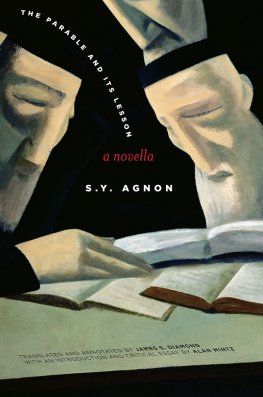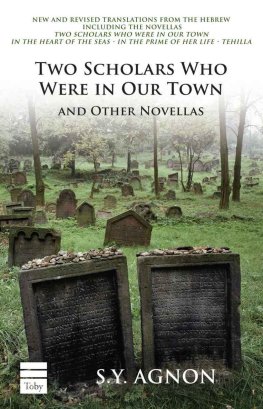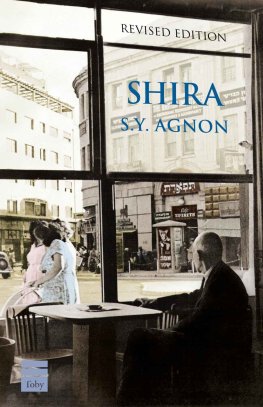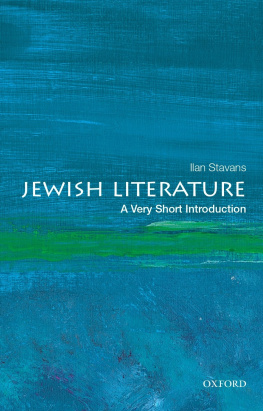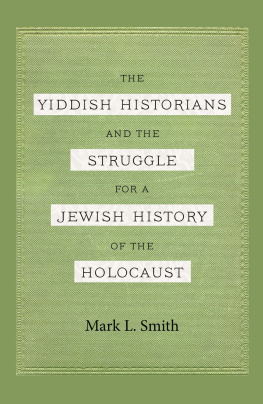S. Agnon - A Guest for the NIght
Here you can read online S. Agnon - A Guest for the NIght full text of the book (entire story) in english for free. Download pdf and epub, get meaning, cover and reviews about this ebook. year: 2014, publisher: The Toby Press, genre: Prose. Description of the work, (preface) as well as reviews are available. Best literature library LitArk.com created for fans of good reading and offers a wide selection of genres:
Romance novel
Science fiction
Adventure
Detective
Science
History
Home and family
Prose
Art
Politics
Computer
Non-fiction
Religion
Business
Children
Humor
Choose a favorite category and find really read worthwhile books. Enjoy immersion in the world of imagination, feel the emotions of the characters or learn something new for yourself, make an fascinating discovery.
A Guest for the NIght: summary, description and annotation
We offer to read an annotation, description, summary or preface (depends on what the author of the book "A Guest for the NIght" wrote himself). If you haven't found the necessary information about the book — write in the comments, we will try to find it.
A Guest for the NIght — read online for free the complete book (whole text) full work
Below is the text of the book, divided by pages. System saving the place of the last page read, allows you to conveniently read the book "A Guest for the NIght" online for free, without having to search again every time where you left off. Put a bookmark, and you can go to the page where you finished reading at any time.
Font size:
Interval:
Bookmark:
S. Y. Agnon
A Guest for the NIght
Foreword
Agnons Roman Clef of Going Home Again
A Guest for the Night was singled out by the Nobel Prize Committee as S.Y. Agnons greatest achievement as a novelist. It is certainly his book which most closely reaches the perfection of form of the modern novel as conceived when written in the 1930s a form which, critic Dan Miron has pointed out, Agnon struggled to domesticate.1 As opposed to his other novels on which he worked sometimes for years, sometimes for decades A Guest for the Night seems to have been written with the least struggle, and also supplies the most definitive and unambiguous ending of all of his books.
In the Spring of 1930 Agnon travelled to Leipzig, Germany, the center of Jewish and European publishing, where the Schocken Press was issuing the first edition of his collected writings in four volumes. An inveterate reviser of his own works, he supervised the preparation of the manuscripts, polishing his prose and editing the writing even as the type was being set for print.
Upon completion of the project, in August, Agnon took a tour of his native region of Galicia (todays western Ukraine), passing through his hometown of Buczacz. Having emigrated to Ottoman Palestine in 1908, when not yet twenty years old, he had only ever returned for two short visits, immediately before and after his fathers death in 1913 (Agnon was then in Germany during his extended sojourn of 191224). Aside from those very brief trips, Summer 1930 was the only return visit he ever made to the Alte Heim, a fact which underscores the enduring and remarkable presence of Buczacz in his writing. Like Twains Hannibal, Faulkners Yoknapatawpha County, and Roths Weequahic, Agnon demonstrates that you can take the boy out of Buczacz, but you cant take the Buczacz out of the boy.
Upon arrival he was received with great fanfare, as documented by the letters he wrote to his wife and other people describing the visit.2 He was a minor celebrity, and both the Jews and the non-Jews of the town seemed aware that this was the young boy Czaczkes (his birth name) who had gone off to Eretz Yisrael, now returning as a middle-aged Agnon (his pen-name), the renowned author.
In fact, he spent only seven days in Buczacz itself; by that point his parents were both dead and his four younger siblings had all left for other lands. He spent about a month travelling around Polish Galicia, including a visit to see his fathers brother in the city of Ternopil. From that uncle he received a wealth of stories and legends and, he claimed, a manuscript of tales of the Czaczkes family history, which he spun into a posthumously published book, Korot Beiteinu (The Beams of Our House, not yet translated from the Hebrew).
However, the most significant outcome of the 1930 visit is clearly A Guest for the Night, a portrait of a homecoming visit to Szibucz (the literary doppelgnger for Agnons native Buczacz). The plot contains the heaviest dose of autobiographical projection of all of Agnons long-form work. To be clear, it is not an autobiography, and we should not fall into the trap of confusing the author with his first-person narrator. Yet, that narrator, his biography and his homecoming visit to Szibucz, map very closely onto the life of the author himself. In fact, we are told, the narrator the Guest of the title is himself an author living in Jerusalems Talpiot neighborhood, and among his works set in his native town is a novella entitled In the Prime of Her Life identical parallels to Agnons own biography.3
The reader gets an impression of an artist painting a portrait of an artist painting a portrait of an artist, or, alternatively, of M.C. Eschers well-known lithograph Drawing Hands, which captures the paradoxical act of two hands rising out of the sketch to draw each other. Where does the author end and where does the alter-ego character of the author projected into the work begin?
Among the clearest differences between autobiography and fiction is that Agnon expands his week-long visit into a period of eleven months starting with Yom Kippur, on whose eve the Guest arrives in town. The knowledgeable reader may recall the eleven-month period during which a mourner recites Kaddish in memory of a parent, and the novels action is marked off as we travel with the Guest around the Jewish calendar and its holidays. Beginning with Yom Kippur, the day of repentance and potential renewal, and ending on the tragic note after Tisha BAv, the memorial day of Jewish destruction. The Guests visit spans that timeframe, with its emotional downward spiral; we imagine it to be the year of mourning for Szibucz, and so many other European Jewish towns, with the mournful tune of Kaddish echoing from between the lines.
The contemporary reader, who encounters the novel at such a historical remove from the time of the action (at this writing almost 85 years have passed), might reasonably assume Agnon had written the work following the Holocaust and destruction of European Jewry, but chose to set the story in the interwar period to heighten the sense of approaching disaster. Such a literary decision would have sharpened the readers understanding of the degree to which World War I was indeed an unprecedented cataclysm, wreaking both physical and spiritual havoc throughout Europe, including the thereunto largely traditional Jewish society of Galicia and Poland. We ahistorical thinkers, living in the early twenty-first century, allow the scope of World War II and the Holocaust to eclipse the destruction wrought by the Great War of a quarter century earlier. Agnon, who lived out that wars years in Germany, never suffered from such a lapse, and his writing bears witness to this. The former presumed goal Agnon writing the story in the 1950s, e.g., but setting the story earlier as a type of apocalyptic handwriting on the wall, seen yet ignored by all, would have fit in very squarely with a perceived Zionist message in A Guest for the Night. However, the book was released in September 1939 the very month Germany invaded Poland having begun its serial run in 139 installments in the HaAretz newspaper between October 1938 and April 1939. In fact, read with this knowledge, A Guest for the Night becomes an eerie and ghoulish premonition of the 1940s. A tragic footnote to the prophecy of doom contained within the book is that in June 1943 the last Jews of the Buczacz Ghetto were rounded up and exterminated in the towns Jewish cemetery a fact whose morbid irony wont be lost on readers who recall the role played by the cemetery in the novel (see, e.g., chapter 16).4
This pending doom is telegraphed already in the books title, which, in Hebrew, is taken from Jeremiah 14:8: O hope of Israel, his Savior at time of trouble, why should You be like a stranger in the land, and like a guest for the night (more literally: a wayfarer who turns aside to lodge)? The eponymous Guest of this source is none other than God Himself, whom the prophet implores to return to an earlier period of intimacy with His chosen people and land, and not remain in self-exile following the destruction, a mere passing guest. The literal interpretation of the verse bears a measure of opprobrium to one who acts as a guest, as an outsider, as opposed to one (or One) who has an intimate and ongoing part in the life of the community. Continues Jeremiah (v. 9): Why should You be like a man overcome, like a mighty man, unable to save? For You are in our midst, O Lord, and Your name is called upon us; forsake us not!
So the titular Guest, the first-person narrator whom the reader is caused to assume serves as some kind of stand-in for Agnon himself, becomes also a stand-in for God, who could serve as a comforter amongst the destruction should he/He choose to do so. The potential is there if the Guest can overcome the self-imposed distance between himself and Szibucz (or between Himself and the Jewish people as a whole). This was neither the first nor the last time Agnon chose his Biblical resonances to simultaneously broadcast on more than one frequency.
Font size:
Interval:
Bookmark:
Similar books «A Guest for the NIght»
Look at similar books to A Guest for the NIght. We have selected literature similar in name and meaning in the hope of providing readers with more options to find new, interesting, not yet read works.
Discussion, reviews of the book A Guest for the NIght and just readers' own opinions. Leave your comments, write what you think about the work, its meaning or the main characters. Specify what exactly you liked and what you didn't like, and why you think so.


